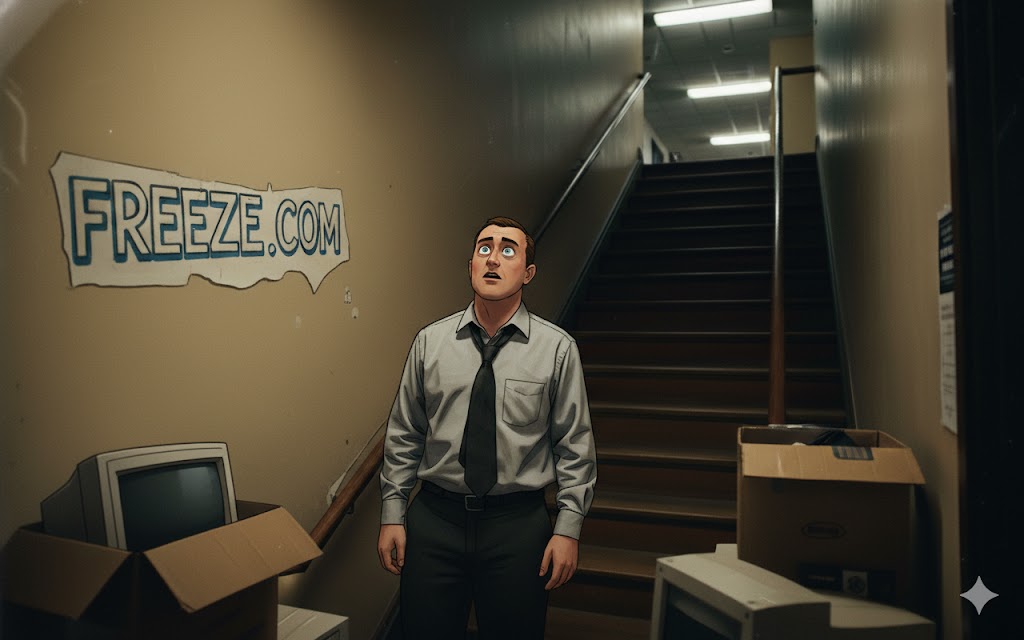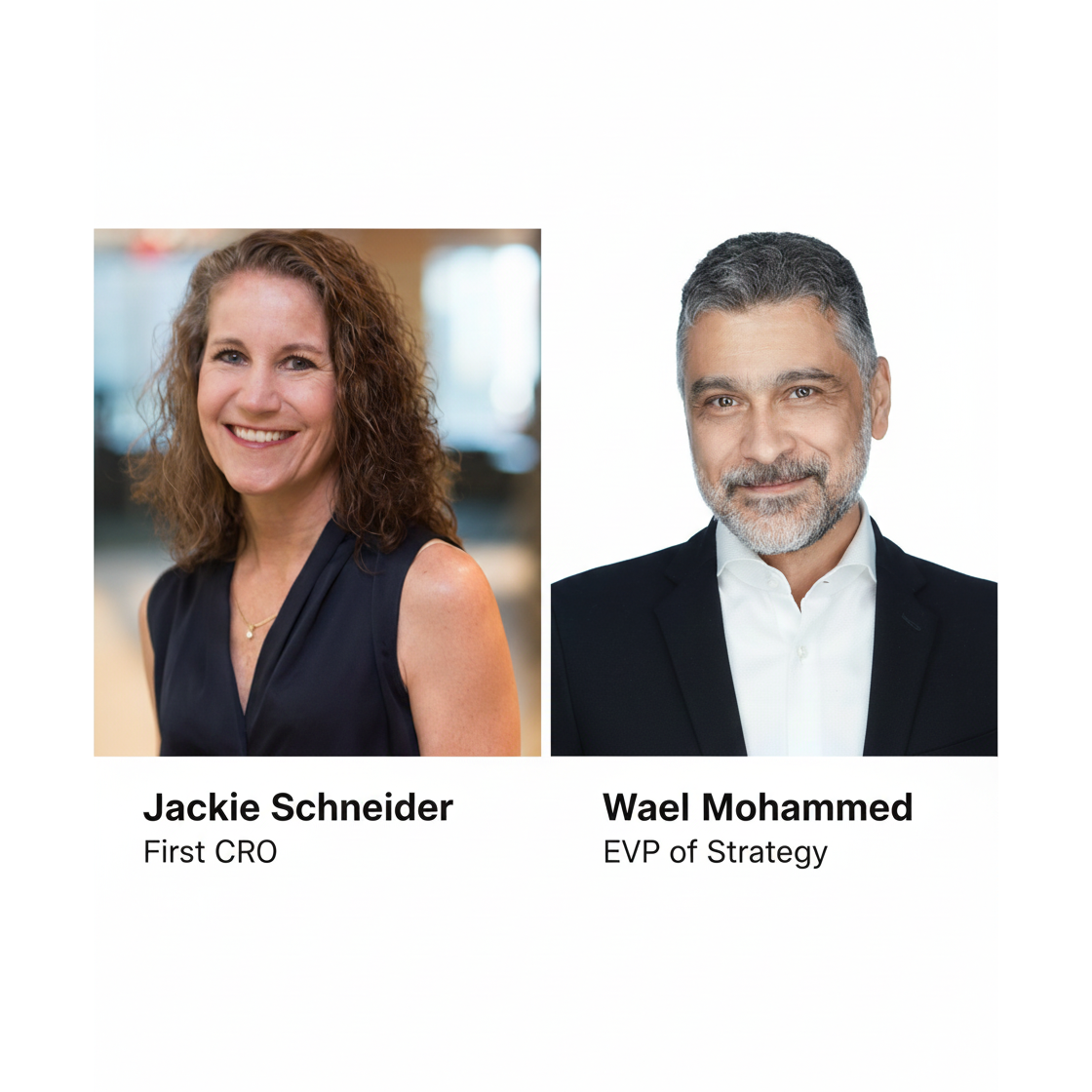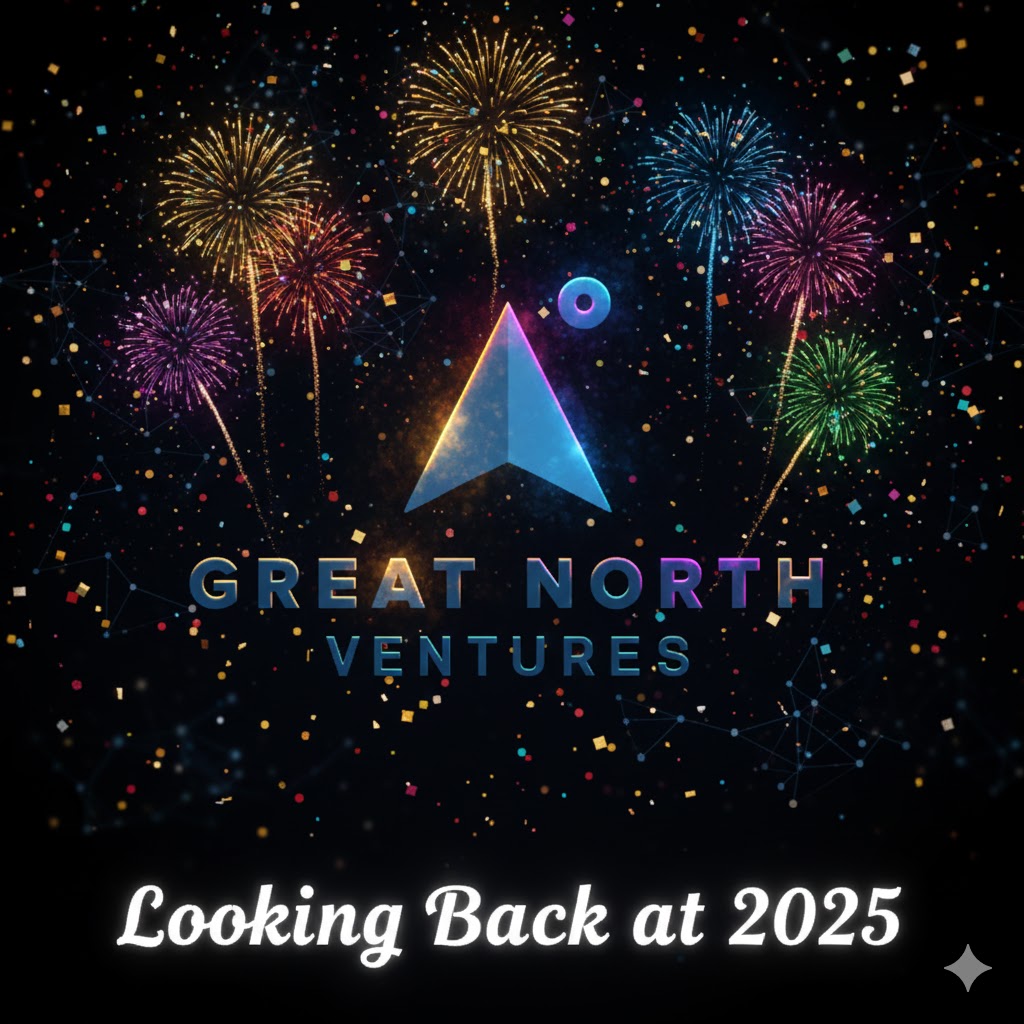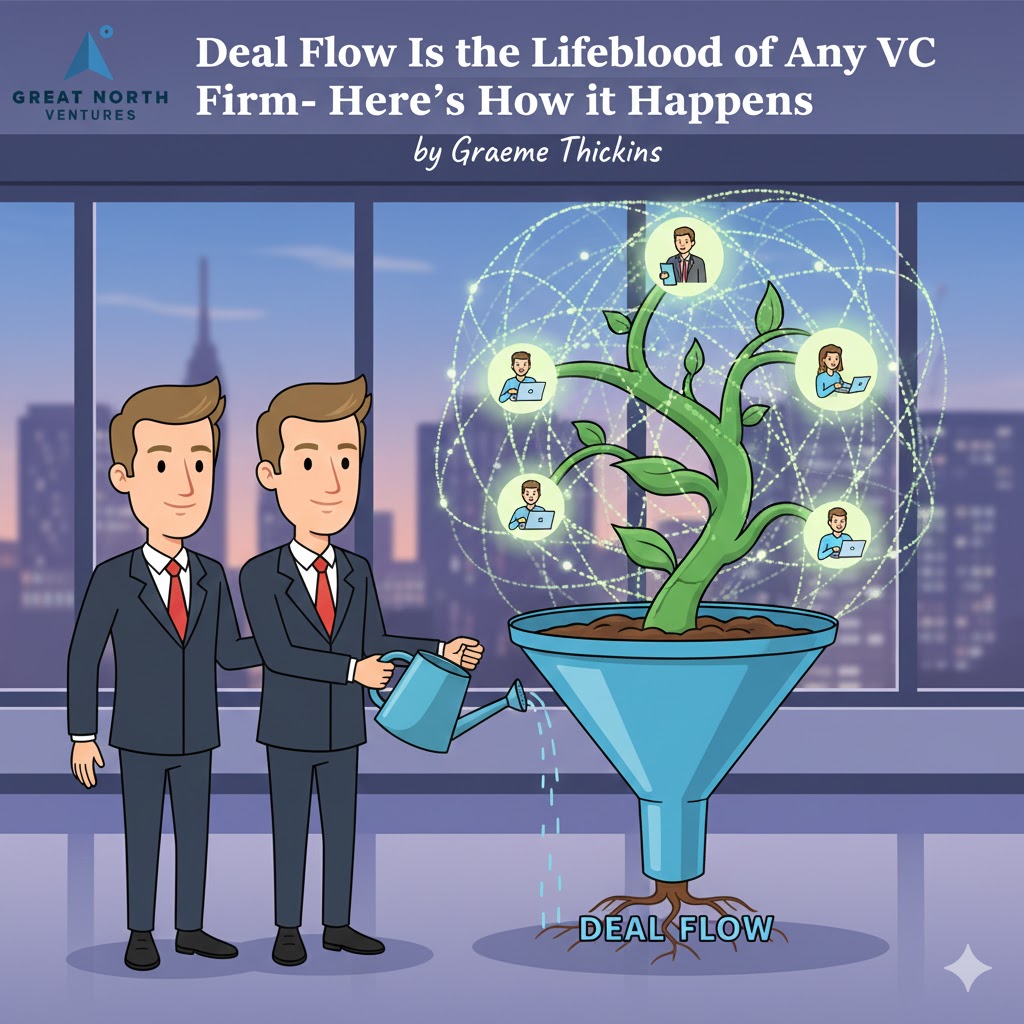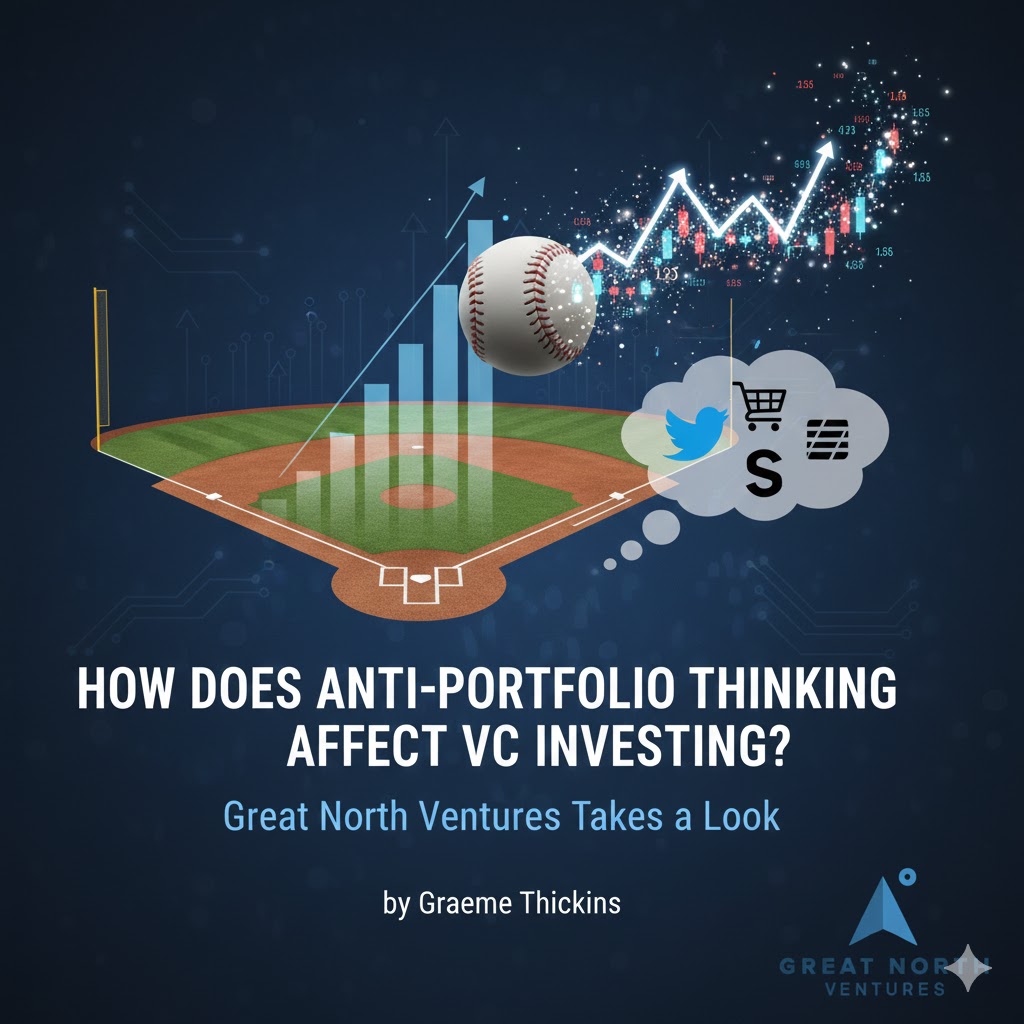By Graeme Thickins
Twin brothers Rob and Ryan Weber, founding partners of Great North Ventures, have raised two funds and invested in more than 50 startups to date and counting, throughout the Midwest and the rest of the county. Well before that success, however, they were founders themselves of their own ventures, beginning in their 20s, and they learned a lot the hard way in their life as “operators,” a label they proudly wear. From that experience, it’s no surprise they have actionable advice for entrepreneurs in today’s world of AI and fintech. I recently interviewed Rob and Ryan to hear some of the stories they willingly share as hard lessons for founders launching startups today.
We begin with a story from their early bootstrapping days with their startup, Freeze.com , which they founded in Minnesota in the late 1990s. “We raised an angel round of $320,000 in the spring of 2000, just before the dot-com bubble popped,” said Rob. “We were generating around $50k a month in free cashflow from advertising revenue from our prior dot-com publishing business, so we didn’t really feel we needed the cash from the angel round. However, we were excited to bring on a couple of those angel investors as board members to provide us mentorship and guidance.”
In the year after this angel round, Rob and Ryan hired their first dozen employees and were on the verge of launching their core optimization back-end system, which they had been incubating. “Meanwhile, our monthly cashflow began to decline very quickly,” said Rob, “as the majority of our ad revenues came from dot-com startups that had run out of funding. We were down to less than $100,000 in the bank and were losing money every month.”
That led to a particularly mentally difficult period, Rob said. “I remember one week I couldn’t force myself to walk up the stairs to our office, and the anxiety was causing a serious lack of sleep. Luckily, I got help and worked through this very difficult time.”
Rob and Ryan’s board – a benefit of that angel round – advised them to reduce their operating costs and conserve cash to weather the storm. “At age 21, my brother and I had to let go a third of those first employees. It was first time we’d ever had to experience a layoff. It was hard.” However, the pair managed to launch their back-end system, and pretty quickly start to generate significantly more free cashflow with the help of their remaining team.
They were definitely back on track. “By 2005, we had scaled to $30 million in annual revenue and $5 million in EBITDA,” said Rob. I asked him what were the hard lessons he and his brother took away from that very difficult early period.
“Number one, raise cash when you don’t know if you need it,” he said. “It will be easier to do and you never know what the future will bring to your business. And, two, remember your business doesn’t define who you are. Founders sometimes lose track of this because they commit so much energy to their business.”
Because Rob and Ryan have lived the founder’s journey literally from a cold start (pun intended), and now evaluate founders for a living, they have more valuable lessons they can share to help today’s founders. The ones from the early days are especially instructive, as founders who bootstrap successfully for survival often are the ones that VCs find the most promising to fund.
Profitability Isn’t Optional, and Metrics Are Critical
Moving from survival to profitability was a journey the brothers obviously conquered. “When we were just starting out, we had pretty good aggregate metrics for our web traffic, such as how much traffic we were getting each day, from which search terms, and so forth,” said Rob. “But we had no idea how the traffic was converting and contributing to our revenue generation.” Once he and Ryan launched their optimization system, they had much better granularity as to how traffic was converting. “That allowed us to run experiments and optimize for efficiency,” said Rob. “The vast majority of our competitors had no such optimization system, so our revenue and free cashflow started to soar.”
This focus on metrics remains essential for startups today, the brothers point out. “Most lack granular KPI measurement for their businesses, which causes them to make decisions based on intuition alone,” said Ryan. “And that does not scale well.”
There’s a problem with the “growth-at-all-costs” mindset of many venture-backed companies, Rob points out. “Such heavily funded companies can get by with a poorer understanding of the KPIs that drive their business. Even though they operate inefficiently, they can continue to afford to burn lots of cash.” The key takeaway here is that founders mustbuild a fundamentally sound business first, Rob maintains. “Capital should amplify a great business, not create a temporary one.”
The Unfair Advantage of Technical DNA
Both Rob and Ryan studied computer science in college. They didn’t do coding or design work themselves once they launched their startup, “but we were very active and curious about how our team was developing our core systems,” said Rob, “and very involved in product design decisions.”
Ryan added: “Our background studying math and computer science caused us to take a pragmatic, analytical approach to decision making. I also think our technical background made us more relatable across our team. We always placed a high degree of value on technical roles, whereas some companies overvalue sales, for example.”
How involved were Rob and Ryan with their team? “We were very much ‘in the trenches’ understanding how our business was growing,” said Rob. “We were able to make effective decisions quickly. What changed over time as we scaled our business was the need to build a team that was also very entrenched in the technology aspects of our business, and to empower them to make decisions.”
The key lesson here for founders, both brothers agree, is that a deep understanding of your technology, product, and market is your most defensible asset. And having a team that also gets that is mandatory.
Scaling with Scarcity Breeds Creativity
Can a lack of resources help drive a founder to seek his or her own solutions? “We didn’t have a large enough engineering team to automate everything, so we would do a lot of tasks ad hoc,” said Rob. “One example was how we scheduled email campaigns to our opt-in email list. Because that list had grown into the millions, we couldn’t schedule one big email campaign because it would crash our email server. So, instead, for about a year in the early days, I had to break up email campaigns into a series of smaller campaigns and set an alarm to remember to check on them and start up new campaigns. This created a lot of interruption in my personal life – which basically didn’t exist! Eventually, we developed better email scheduling tools, but you do what it takes to grow – and we did.”
The brothers ran their startup – by this time named W3i, and later NativeX – with an intense focus on capital efficiency and a culture of ownership. “When others on the team see how you’re willing to accept certain hardships or personal sacrifices in growing your business,” Ryan noted, “it makes them more willing to take that on themselves. Our early team very much all had this founder mindset.”
The lesson for founders is this: Constraints can actually be a good thing. They force you to build a lean, resilient, and resourceful team.
Looking Through the Investor’s Lens: The Great North Ventures Thesis
When the Weber brothers look at a pitch now, they admit they must see past the flashy growth numbers to the underlying unit economics. “In nearly every first call,” said Rob, “I ask how much capital has been invested into the business to get to where they are now. It isn’t so much how much revenue they’re generating relative to what they’ve burned, but, rather, how much have they really accomplished with the capital that’s been invested?”
With their experience, they ask themselves: Is this a real business, or just a story the entrepreneur seeks to fuel with capital? “I once invested a small angel check into a startup that raised a Seed round pre-launch. I remember the startup burned through all the Seed capital and ultimately never even launched their product. This stuck with me. There are many ‘founders’ out there that, even if they were able to successfully raise a Seed round, still would not be able to organize a team to deliver a well-crafted product that solves a real problem.”
What smart investors like the Webers look for are founders who are obsessed with their business model and their unit economics, not just the funding they seek.
“A really good example of what we call ‘Seed-strapping’,” said Rob, “is our portfolio company WithMe, which began in Chicago, whose founder proudly admits he raised the least amount of capital necessary.”
Investing in Founder-Market Fit
How does Great North Ventures evaluate founding teams today? “I’m looking for founders who have uncovered a market tailwind that is being underutilized and, as such, have created the opportunity to solve a problem in a new way that wasn’t possible before,” said Rob. “Often, this is through the unleashing of an emerging technology where incumbents are slow to adopt.”
Rob goes on: “When Ryan and I were teenagers, in the mid-to-late ‘90s, Internet usage was exploding and, although there were many people in the world experimenting with web publishing, there was a huge imbalance. That is, the opportunity created by the rapid, widespread adoption of the Internet was far greater than the number of web publishers putting up new websites.”
Ryan adds: “Ideally, the founders we look at have been tinkering with whatever technology they plan to unleash so they have mastered the skills required to properly harness it within their business.”
Essentially, the Weber brothers back founders who have a unique, almost unfair, insight into the problem they’re solving. It’s the “Why you?” question.
“Typically, I see the unique insight coming from one of two areas: technology-driven or market-driven,” said Rob. “Founders who have mastered a new technology can often deploy their skills into any number of vertical markets, which can provide them an advantage over incumbents. Think back to the late ‘90s: no one at giant Walmart was going to take on Jeff Bezos when it came to pioneering in e-commerce, despite Bezos having no retail background. Market-driven insights can be very powerful, too, especially in more complex industries where problems are super obvious outside of the industry. When founders have a more market-driven insight but lack technical skills, that’s okay. But we strongly prefer they have a cofounder or early team member who has strong technical skills to complement them.”
Net-net, the brothers look for evidence that the founders are the only people in the world who can build this specific company.
Investing in Capital Efficiency
It’s helpful to look at how the Weber brothers view a startup’s request for capital. Just a number means little – it’s the strategic plan that matters.
“I’ve often seen that, even when startups are competing in the same market, how they deploy capital is frequently more important than the total capital raised,” said Rob. “I’ll give one example from our portfolio. We have a startup in our portfolio called Inhabitr, which was also originally founded in Chicago (but now in California). It provides an AI-powered platform for B2B furniture procurement. Around the time we led their Seed round, a handful of other competitors raised much larger early funding rounds. While Inhabitr invested in its core AI capabilities and chose to partner with others in the furniture retail space, their competitors invested heavy amounts of capital into developing their own inventory and warehouses. Over time, most of Inhabitr’s competitors significantly underperformed because of this poor deployment of capital.”
The Webers’ bootstrapping background gives then a keen eye for founders who will treat every dollar of investment with the same care they’d treat their own last dollar.
Thus, they look fora clear, credible plan for how their fund’s capital becomes a force multiplier for the founders’ existing resourcefulness.
“One thing we often see,” said Ryan, “is startups burning large amounts of capital to fund their unproven go-to-market strategy. A better approach is to deploy small amounts of capital in the early going to develop expertise in one, scalable market channel. Once they’ve mastered that channel, that’s the time to plow capital into it.”
Conclusion: The Best Founders Think Like Investors
The Webers believe, whether you’re bootstrapping or raising millions, the goal is the same: build a durable, valuable company. They know the best founders are always thinking about the long-term health and defensibility of their business.
What final piece of encouragement would Rob and Ryan add? They jointly advise: “Cultivate an unwavering focus on your customers and the problem you’re solving, and let that guide you in key decisions. The investment you make into systems that allow you to understand your customers at the most granular level will likely be your most profitable investment.”
If you’re a founder building with this mindset, and you’re a fit for Great North Ventures’ investment strategy, Rob and Ryan want to hear from you.
To learn more about Rob and Ryan Weber’s background, check out my prior post here.
———-
Graeme Thickins is a startup advisor and an investor in Great North Ventures Fund I. He is also an angel investor in two subsequent Great North portfolio companies. He has written previously for and about Great North Ventures and its founders over several years.

